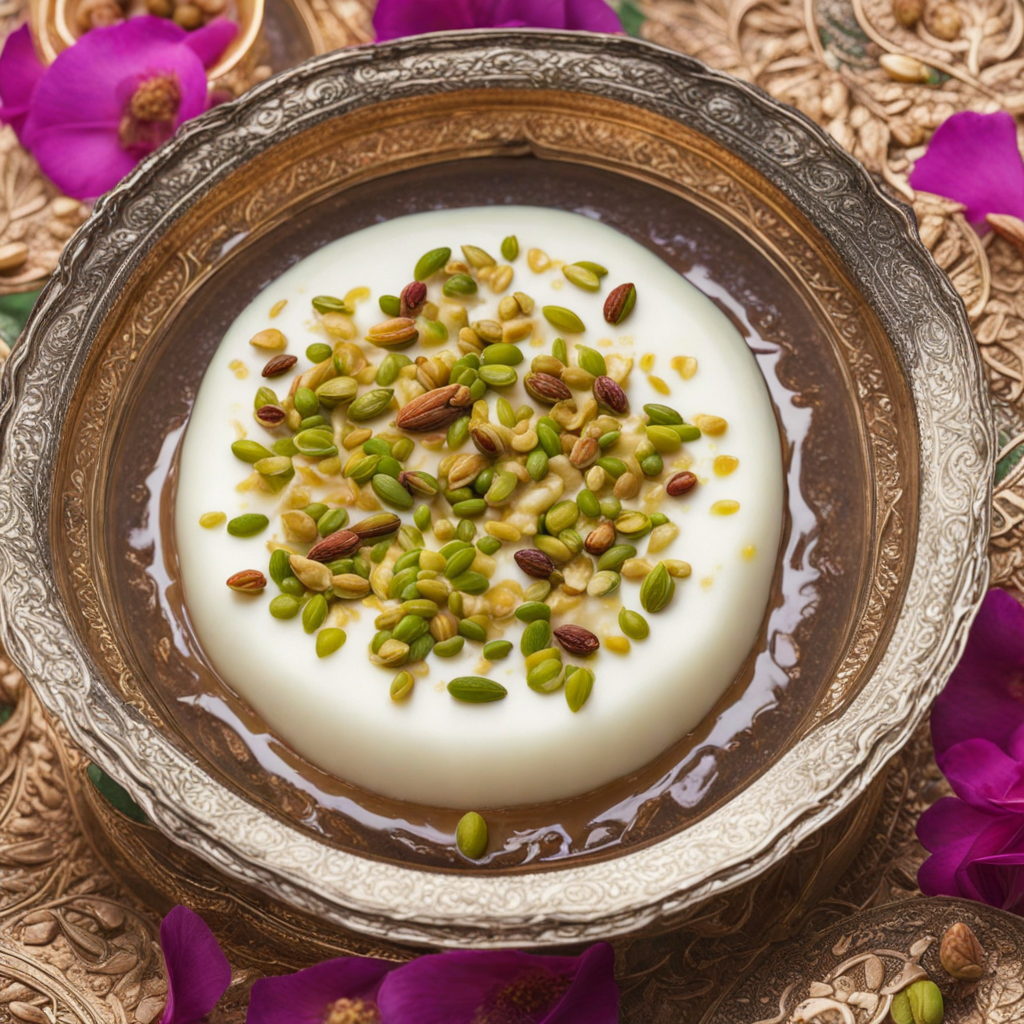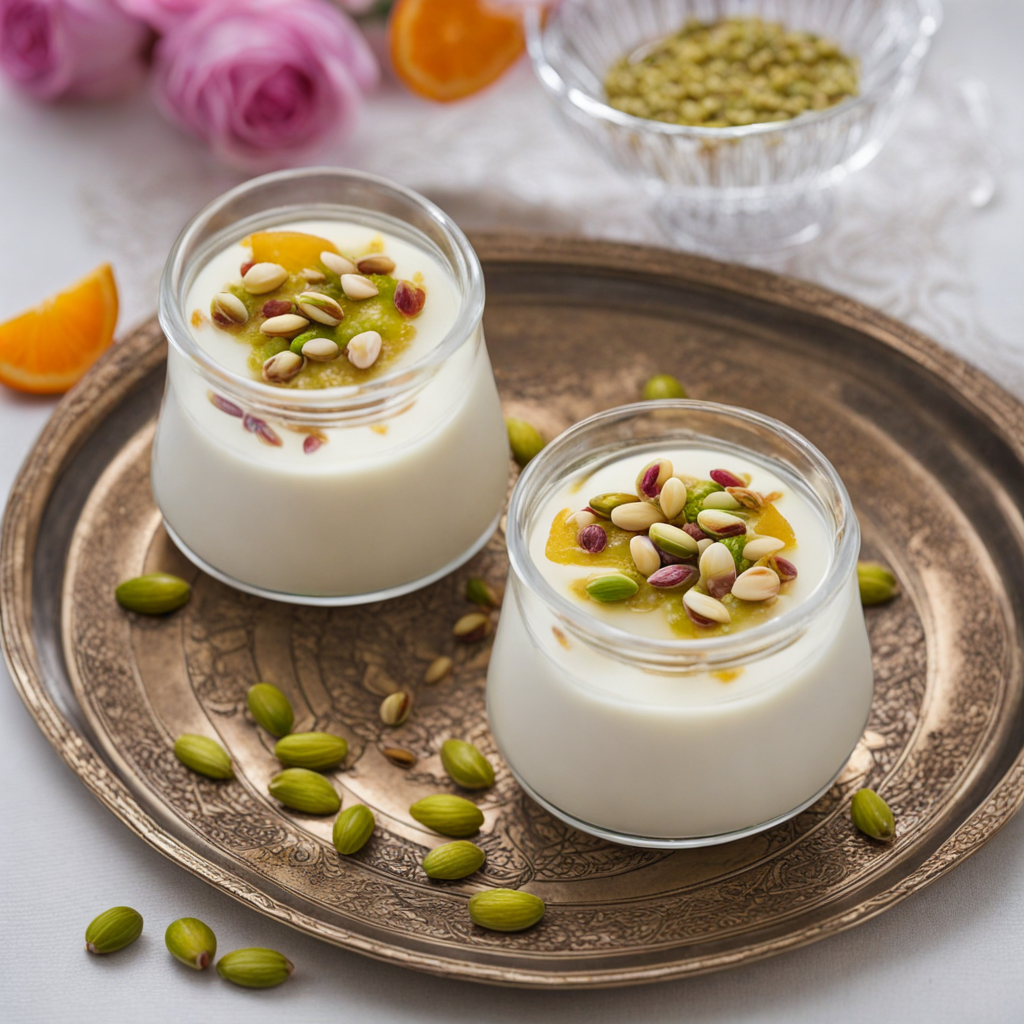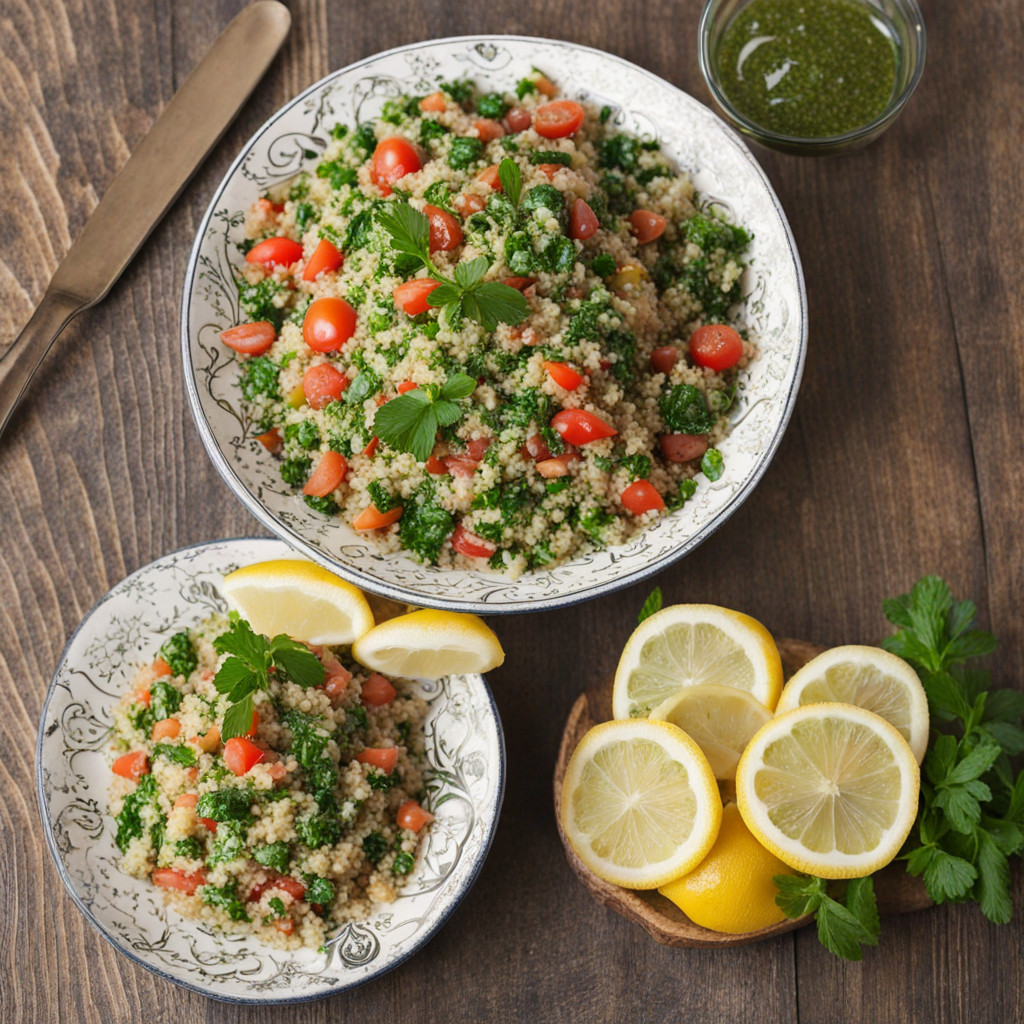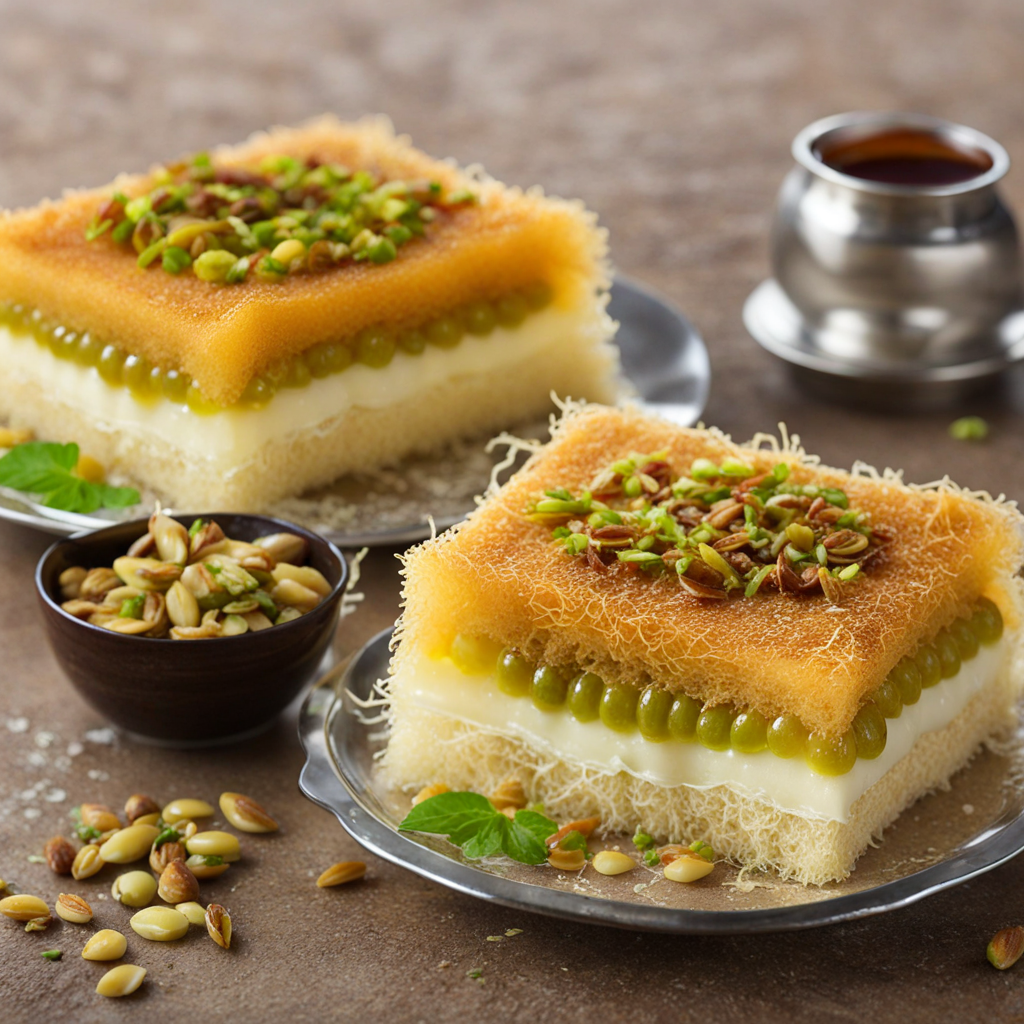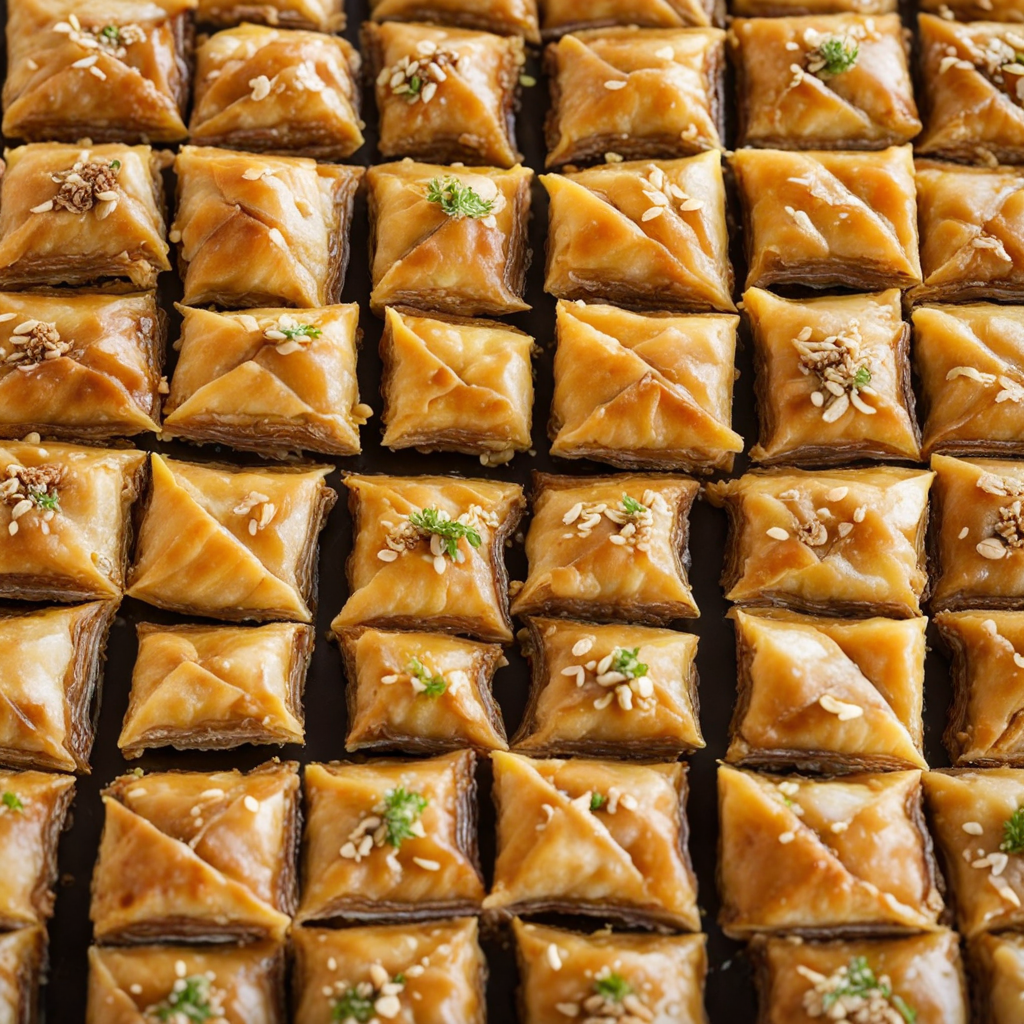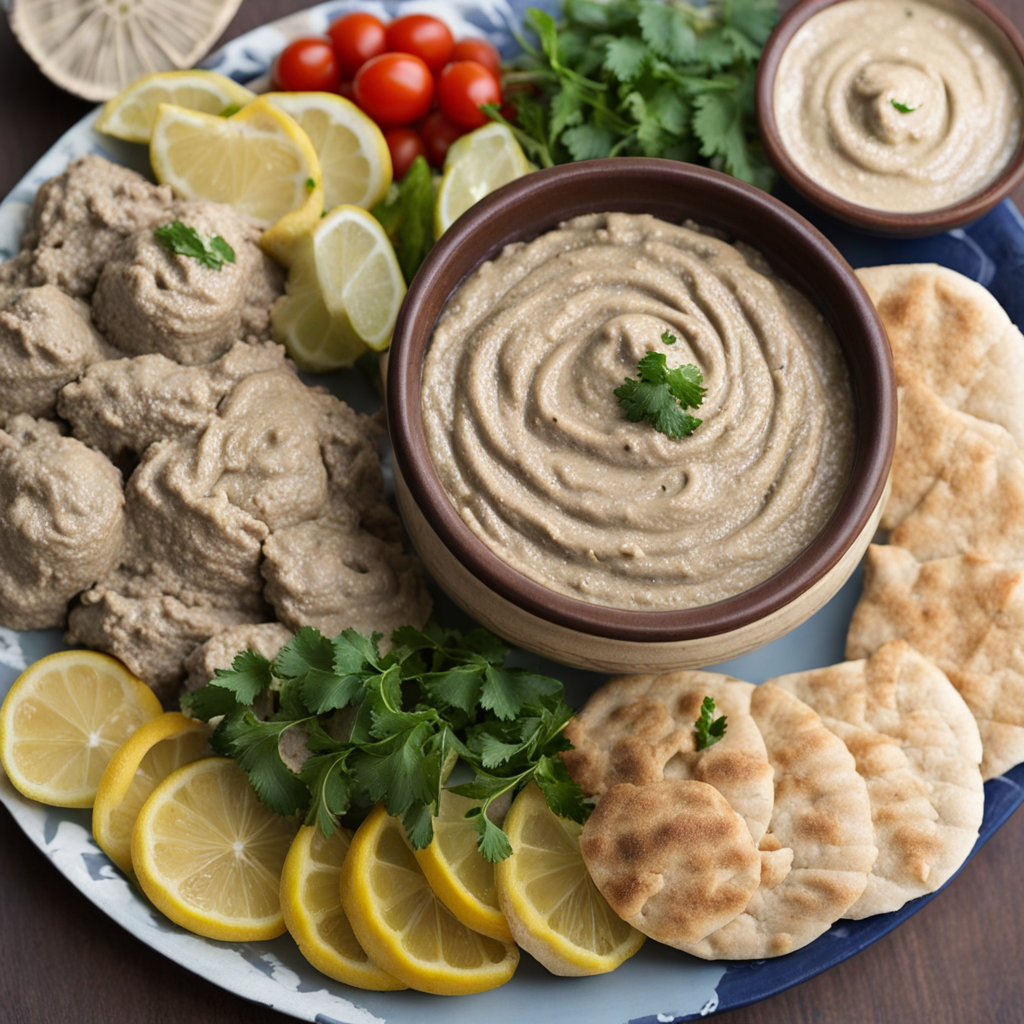Mehalabiya
Mehalabiya is a delightful dessert that hails from the rich culinary traditions of Jordan and the broader Middle East. This creamy, aromatic pudding is primarily made from milk, sugar, and cornstarch, which are carefully combined and cooked until they reach a silky, smooth consistency. Often flavored with a hint of rose water or orange blossom, Mehalabiya offers a fragrant experience that transports your taste buds to the sun-drenched landscapes of Jordan. The dessert is typically served chilled, making it a refreshing treat, especially during warmer months. To elevate its presentation and flavor, Mehalabiya is frequently garnished with a variety of toppings, such as crushed pistachios, almonds, or coconut flakes. These toppings not only add a delightful crunch but also introduce a nutty aroma that complements the pudding's soft, velvety texture. Some variations may include a drizzle of syrup or honey, enhancing the sweetness and creating a more indulgent experience. Mehalabiya is more than just a dessert; it embodies the warmth and hospitality of Jordanian culture. It is often served during family gatherings, celebrations, and special occasions, symbolizing joy and togetherness. Each spoonful of this luscious pudding invites you to savor the rich flavors and comforting textures, making it a must-try for anyone looking to explore new culinary horizons.
How It Became This Dish
Origins of مهلبية مهلبية, known as "muhallabieh" in Arabic, is a traditional dessert that has roots deeply embedded in Middle Eastern cuisine, particularly in the Levant region, which includes Jordan, Lebanon, and Palestine. The name "muhallabieh" is derived from the Arabic word "حليب" (halib), meaning milk, as the dish is primarily based on milk or cream thickened with cornstarch or rice flour. The origins of مهلبية can be traced back to the ancient civilizations of the Middle East, particularly during the Islamic Golden Age, around the 8th to 13th centuries. During this time, culinary practices flourished, and many recipes were documented, showcasing the use of dairy products, sweeteners, and various flavorings. Historical texts from this era, such as those by renowned scholars like Ibn al-Munajjid, contain references to milk-based desserts, hinting that versions of muhallabieh were enjoyed by the elite classes of the time. \n\n Cultural Significance In Jordan, مهلبية holds a special place in the culinary landscape and is often served during festive occasions and family gatherings. It embodies the warmth of hospitality, as it is frequently offered to guests as a sweet treat after meals. The dessert is also a common feature during Ramadan, the holy month of fasting, where it serves as a refreshing and nourishing option to break the fast, often garnished with nuts and syrup for added flavor. Beyond its role in celebrations, مهلبية is also significant in everyday life, as it is a quick and easy dessert that can be prepared with minimal ingredients. The simplicity of the dish reflects the resourcefulness of Jordanian cooking, where households often create satisfying meals and treats with locally available products. Its versatility allows for variations in flavoring, such as the addition of rosewater or orange blossom water, which further enhances its cultural significance as a dish that can be tailored to individual preferences. \n\n Development Over Time As culinary practices evolved, so too did مهلبية. Its basic ingredients—milk, sugar, and a thickening agent—remain consistent, but the methods of preparation and presentation have adapted to modern tastes and trends. In the past, the dessert might have been served simply in bowls, but contemporary presentations often feature elegant plating, with the addition of garnishes like crushed pistachios, almonds, or even fresh fruits like strawberries and pomegranates, providing a visual appeal that elevates the dining experience. During the 20th century, as globalization began to influence local cuisines, مهلبية also saw an increase in its popularity beyond Jordan's borders. It became a staple in many Middle Eastern restaurants around the world, introducing it to a broader audience. This international exposure has led to the creation of fusion variations, where traditional flavors are combined with ingredients from other culinary traditions, further enriching its history and reach. \n\n Regional Variations While Jordanian مهلبية has its distinct characteristics, variations of this dessert exist across the Middle East. For instance, in Lebanon, it may be served with a rich layer of caramel or a sprinkle of cinnamon on top. In Turkey, a similar dish called “muhallebi” is made, often flavored with mastic, giving it a unique texture and taste. Each region puts its own spin on the dessert, reflecting local tastes and ingredient availability, which showcases the adaptability of this beloved dish. In recent years, there has been a resurgence of interest in traditional and regional desserts across the Middle East, including مهلبية. Chefs and home cooks alike are exploring its historical roots and experimenting with new flavors and techniques. This revival not only helps preserve the cultural heritage of the dish but also encourages younger generations to appreciate and engage with their culinary heritage. \n\n Modern Interpretations In the current culinary landscape, مهلبية has transcended its traditional role as merely a dessert. Influenced by contemporary gastronomy, chefs are incorporating مهلبية into more elaborate tasting menus, pairing it with unexpected ingredients such as saffron or using it as a filling for pastries. This innovative approach has helped elevate the dessert into a fine-dining context, showcasing its versatility and allowing it to be enjoyed in a variety of settings. Moreover, the rise of health-conscious eating has led to adaptations of مهلبية that cater to dietary preferences, such as vegan versions made with almond or coconut milk and natural sweeteners. These modern interpretations reflect changing societal attitudes towards food, where traditional dishes are being reimagined to fit contemporary lifestyles while still honoring their historical roots. \n\n Conclusion Overall, مهلبية is more than just a dessert; it is a representation of Jordanian culture and history, a symbol of hospitality, and a dish that continues to evolve. Its enduring popularity speaks volumes about its comforting qualities and the way it brings people together. As it adapts to modern tastes and trends, مهلبية remains a beloved staple in Jordanian households, captivating the hearts of those who indulge in its creamy, sweet goodness. Through its rich history, it serves as a delicious reminder of the shared culinary traditions that bind communities together across generations.
You may like
Discover local flavors from Jordan


